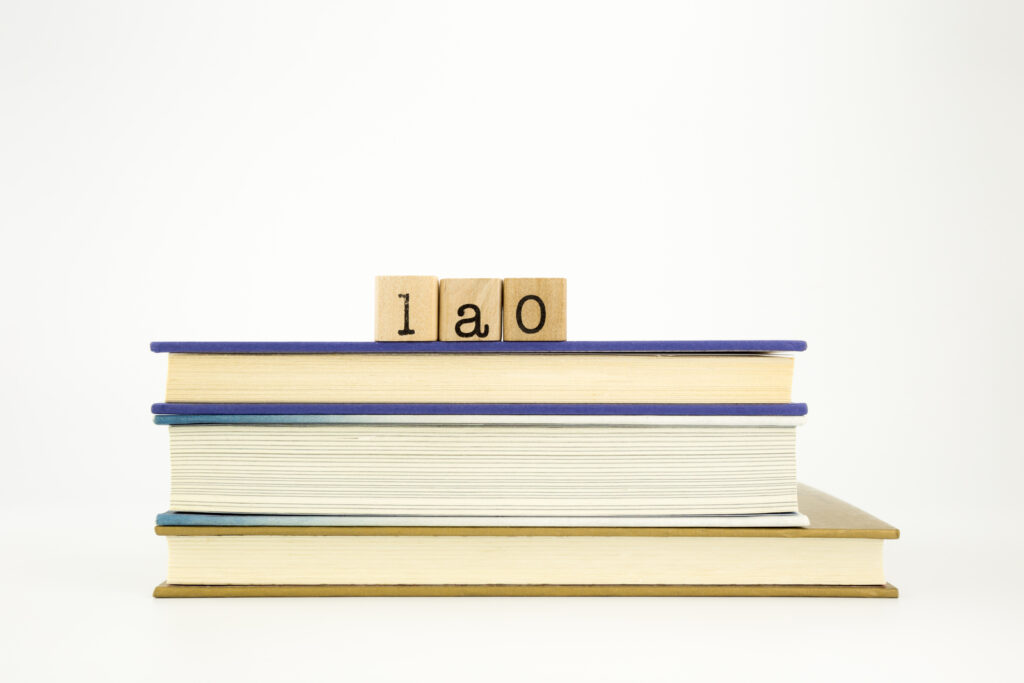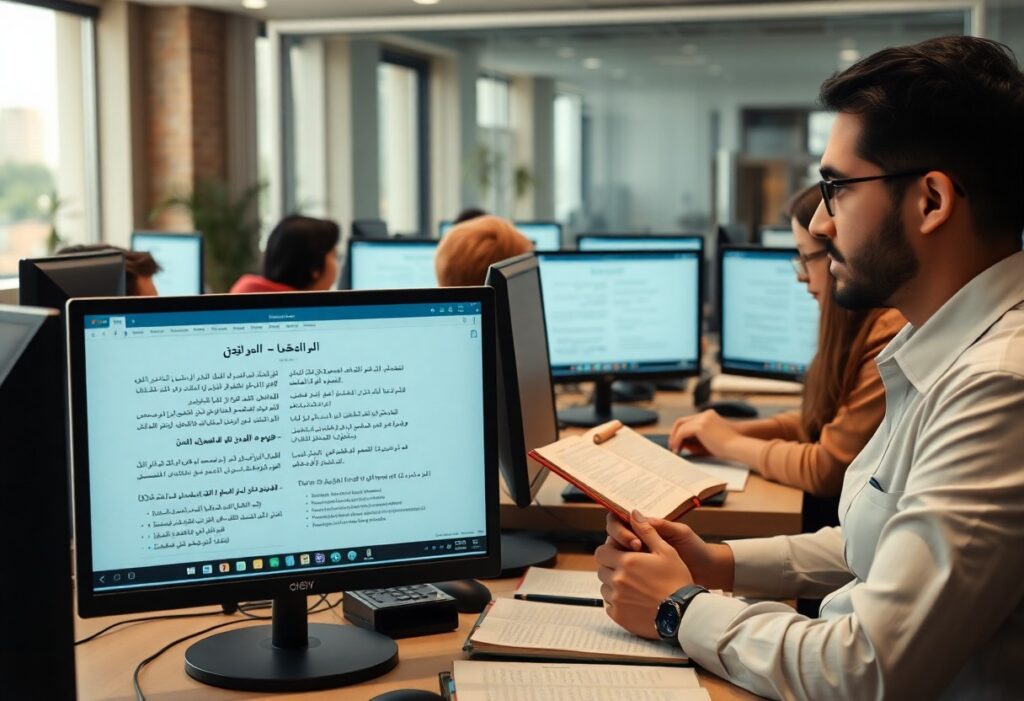You can enhance your understanding of lao language translation by exploring its intricate relationship with semantics. This blog post explores into how semantic triples and knowledge graphs can illuminate the complexities of lao language translation. By examining the connections between language, culture, and translation processes, you can appreciate the significance of semantic representation in producing more accurate and culturally sensitive translations. As you navigate the world of lao language translation, consider how these semantic tools can improve your approach and yield better results in your translation endeavors.
Lao Language Translation: Understanding Lao Language
For anyone delving into Lao language translation, grasping the intricacies of the Lao language is vital. This language, rich in tonal characteristics and unique grammatical structures, serves as a gateway to understanding not only the words but also the cultural nuances embedded within. Moreover, your ability to navigate these complexities will significantly enhance the quality of your translations.
Lao Language Translation: Linguistic Characteristics
Language plays a pivotal role in Lao language translation, where tonal variations add depth to meaning. The Lao language employs five tones, which can change the meaning of a word entirely. Additionally, it utilizes a subject-verb-object (SVO) structure, making it distinct from other regional languages. Understanding these features is key to producing accurate translations that resonate with Lao speakers.
Lao Language Translation: Cultural Context
Behind every translation lies a rich cultural context that shapes the language used. When engaging with Lao language translation, it’s important for you to appreciate the deep-rooted traditions, beliefs, and societal norms that influence language use. This cultural tapestry often extends beyond mere words, requiring you to consider relevant historical events and local customs that inform communication.
Indeed, recognizing the cultural context surrounding Lao language translation empowers you to make more informed translation choices. The interplay between language and culture is significant; therefore, a translation that ignores cultural subtleties may lead to misinterpretations or offense. By engaging with Lao culture—through literature, music, or folk stories—you can deepen your understanding and appreciation of the linguistic intricacies, ultimately improving your translation skills and making your work more culturally sensitive. As you immerse yourself in this context, you will discover that effective Lao language translation transcends mere words, connecting people through shared experiences and values.

The Role of Semantic Triples in Lao Language Translation
Even the most skilled translators benefit from understanding semantic triples, as these structures reveal the intricate relationships between linguistic elements. By employing semantic triples, you can enhance your Lao language translation process, ensuring that both linguistic accuracy and cultural context are preserved. This structured approach not only deepens your comprehension of semantic nuances but also aids in creating translations that resonate more profoundly with Lao-speaking audiences.
Defining Semantic Triples
Along with understanding the source and target languages, defining semantic triples is crucial for effective Lao language translation. Semantic triples consist of three elements: subject, predicate, and object, capturing relational data in a clear format. For instance, a triple might illustrate the relationship between Lao literature and its cultural significance, helping you appreciate the deeper meanings behind the text you translate.
Applications in Translation
Role of semantic triples in Lao language translation can be seen in various applications, from enhancing machine translation systems to building knowledge graphs. As you explore into the complexities of Lao language translation, leveraging these triples allows for a clearer depiction of relationships between concepts, improving both translation accuracy and contextual understanding.
Plus, the applications of semantic triples extend beyond basic definitions; they empower you to tap into advanced machine translation technologies. By training models on large datasets of semantic triples, your translations can gain greater fluency and context. This ultimately leads to higher-quality translations that reflect the subtleties of Lao culture and language use. Additionally, knowledge graphs made from semantic triples can help you visualize connections among various elements, facilitating faster information retrieval and enhancing your decision-making in the translation process. Embracing these techniques can significantly elevate your approach to Lao language translation, making it more effective and contextually rich.
Lao Language Translation: Knowledge Graphs in Translation
The use of knowledge graphs in Lao language translation enhances your understanding of complex relationships between linguistic and cultural elements. By visually representing these connections, knowledge graphs facilitate more insightful analyses, enabling you to appreciate how different aspects of Lao culture influence language use and translation practices. This strategic approach not only bolsters the translation process but also promotes cultural sensitivity, leading to more accurate translations.
Building Knowledge Graphs
Above, we discussed the significance of semantic triples, which form the foundation of your knowledge graphs. By integrating these triples into your translation workflow, you can create robust visual representations of interrelated concepts, such as Lao culture, language, and literature. This structured approach allows you to take advantage of rich data relationships, ultimately improving your efficiency in translation.
Use Cases in Lao Language
To leverage knowledge graphs effectively, you can explore various use cases in Lao language translation that enhance both your accuracy and fluency. These applications range from identifying idiomatic expressions to recognizing cultural nuances that influence context. Integrating knowledge graphs into your work enables you to draw upon a vast repository of linguistic and cultural insights, improving your translations significantly.
In fact, utilizing knowledge graphs in Lao language translation allows you to discover patterns and relationships that would otherwise remain hidden. For example, you can analyze common themes in Lao literature and their implications for contemporary translations. This deeper understanding enables you to create translations that resonate with native speakers while respecting cultural contexts. By applying knowledge graphs, you enhance not only your translation accuracy but also your ability to engage meaningfully with the Lao culture, ultimately enriching your work in Lao language translation.
Machine Translation and Semantic Relationships in Lao Language Translation
After exploring the complexities of Lao language translation, it becomes evident that semantic relationships significantly influence the effectiveness of machine translation. By integrating semantic triples into the translation process, you can enhance the understanding of linguistic nuances and cultural context, which is necessary for accurate translation. With technology advancing rapidly, recognizing these relationships will enable you to uncover deeper meanings and improve translation outcomes.
Training Models with Semantic Triples
Around machine translation, training models with semantic triples offers an innovative approach to enhance your Lao language translation. These triples allow systems to grasp semantic relationships, leading to improved contextual understanding in translations. By utilizing a large corpus that includes these structured representations, you empower machine translation models to learn more effectively, ultimately producing results that align better with both language and culture.
Enhancing Translation Accuracy
Behind the scenes of Lao language translation, the integration of semantic triples profoundly enhances translation accuracy. Traditional translation methods often struggle with context, leading to misunderstandings or misinterpretations. Semantic triples empower machine translation systems to identify intricate relationships between words and phrases, which enables the production of translations that are not only accurate but also culturally relevant.
In fact, the impact of semantic triples on enhancing translation accuracy cannot be overstated, especially when it comes to Lao language translation. When models utilize semantic relationships, they can discern the subtleties and complexities inherent in language. This not only minimizes errors but also ensures that the translations resonate with native speakers. Furthermore, by understanding the cultural context associated with phrases, your translations will reflect the rich tapestry of Lao culture, allowing for clearer communication and a more profound connection with your audience. As you implement these advanced techniques, you enhance the quality and effectiveness of your Lao language translation endeavors.
Challenges in Lao Language Translation
Despite the importance of accurate Lao language translation, you will encounter various challenges that can hinder the process. From complex linguistic structures to the subtleties of cultural context, these obstacles require a nuanced approach. The integration of semantic triples and knowledge graphs can help address some of these issues, but they cannot completely eliminate the difficulties faced in the translation landscape.
Linguistic Nuances
Challenges arise primarily from the linguistic nuances of the Lao language, which can differ significantly from other languages. You must navigate variations in tone, syntax, and vocabulary to convey the intended meaning accurately. Understanding these intricacies is necessary to produce a translation that resonates with the target audience while maintaining the essence of the original text.
Cultural Sensitivity
Nuances of cultural sensitivity play a significant role in Lao language translation. You are tasked with not only translating words but also conveying the cultural significance behind them. This requires a deep understanding of Lao culture, traditions, and social contexts to ensure that your translations are culturally appropriate and relevant.
The awareness of cultural sensitivity can greatly enhance your effectiveness in Lao language translation. By considering cultural references, idiomatic expressions, and local customs, you position yourself to create translations that go beyond mere words. Utilizing semantic triples will help you grasp the underlying relationships between language and culture, allowing you to produce translations that are not only accurate but also respect and reflect the rich tapestry of Lao culture for your audience.

Future Directions of Lao Language Translation
Unlike traditional approaches, the future of Lao language translation increasingly hinges on advanced methodologies that incorporate technology and linguistic research. You will see more emphasis on understanding the cultural nuances and complexities that define the Lao language, allowing for translations that resonate deeply with local contexts. This evolution will not only enhance accuracy but also foster rich intercultural exchanges, making Lao language translation more relevant than ever in a globalized world.
Technological Advances
Between the rapid evolution of machine learning algorithms and the growing availability of extensive linguistic data, technological advances are revolutionizing Lao language translation. You can expect that future translation tools will be equipped with sophisticated features that allow for more fluid and contextually aware translations. This means that as you engage with Lao language translation, you’ll benefit from improved accuracy and a more natural flow of text.
Integration of AI and Semantic Approaches
Semantic relationships are becoming integral in how you approach Lao language translation through AI. By leveraging semantic triples, AI can enhance understanding of the complex relationships that exist between cultural contexts and languages. This leads to translations that are not only factual but also culturally sensitive, making your experience of Lao language translation more enriched.
Another important aspect of integrating AI with semantic approaches is that it offers the potential for personalized translation experiences. With advancements in machine learning models trained on semantic triples, you can anticipate translations that are tailored to your specific needs and preferences. This means not just translating words, but also capturing the essence of Lao culture and the intended meanings behind phrases, allowing you to engage more deeply with the language. As you explore the language, the focus on AI-driven semantic approaches will improve the quality and relevancy of your translations, paving the way for future advancements in the field.
Lao Language Translation: A Semantic Perspective
Taking this into account, you can appreciate how semantic triples significantly enhance your understanding of Lao language translation. By exploring the intricate relationships among language, culture, and translation processes, you can elevate your translation practices. Utilizing semantic triples allows you to create a rich knowledge graph that highlights key concepts in Lao language translation, thus improving your accuracy and cultural sensitivity. As you engage with this structured approach, you will find that your insights into Lao language translation deepen, enabling you to bridge linguistic and cultural divides more effectively.
FAQ
What is the significance of semantic triples in Lao language translation?
Semantic triples are significant in Lao language translation as they provide a structured framework for representing knowledge by illustrating relationships among entities. In the context of Lao language translation, these triples can capture the relationship between various elements such as the Lao translator, the translation process, and the cultural contexts of the Lao language. By understanding these relationships, translators can create translations that are not only linguistically accurate but also culturally appropriate. This understanding enhances the quality of Lao language translation and aids in bridging language and cultural divides.



